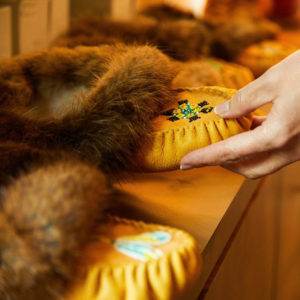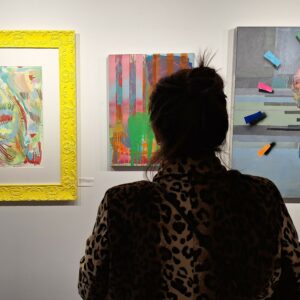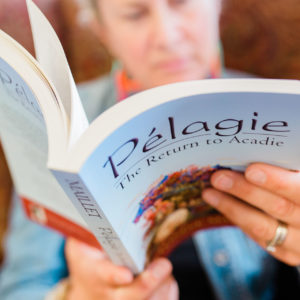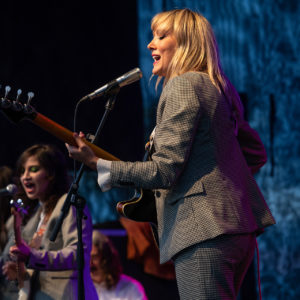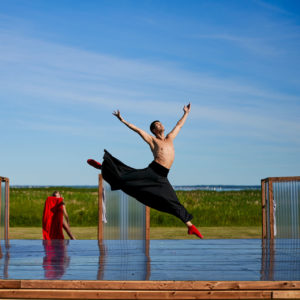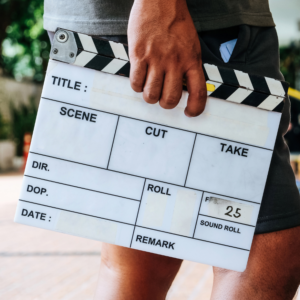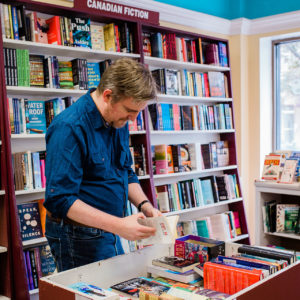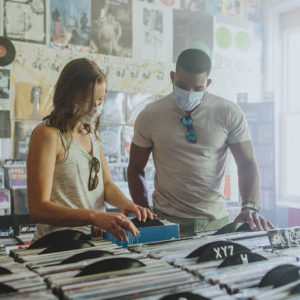
Annabelle Babineau
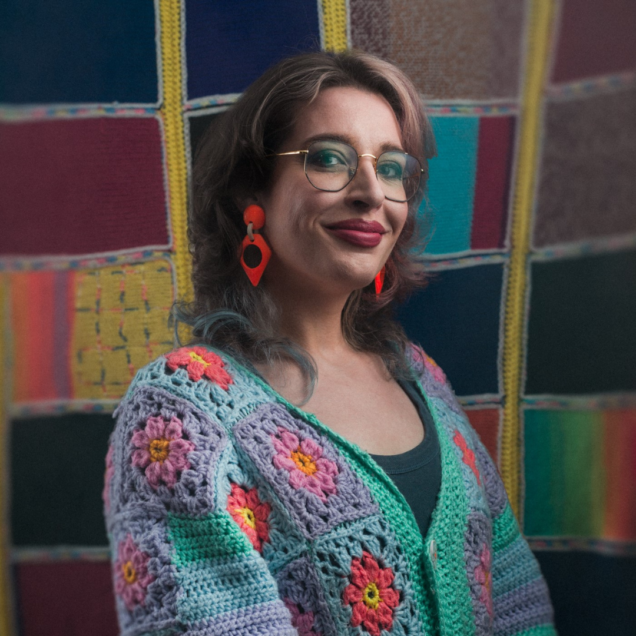
Born and raised in Moncton, New Brunswick as a French Acadian, Annabelle was always fascinated by performance and creating all forms of art. She was the kind of kid who forced her parents to watch endless living room recitals for dance, singing, theater and homemade costumes were obviously included. Today, she is a multidisciplinary artist who is fascinated with the intersection between the queer and Acadian communities.
Growing up in a warm and family-oriented Acadian community, her grandmother taught her how to knit as a child. Annabelle has been knitting for over 20 years and crocheting for over 10 years. She taught herself how to crochet on Youtube, just like she did with quilting and rug tufting, and just about any grandma craft you can think of. She merges those techniques with the world of drag and other forms of fiber art..
Annabelle teaches workshops on drag, embroidery and fiber arts across New Brunswick, works as an educator, a filmmaker, an actor and creates commissioned pieces and costumes for drag queens and so much more! She also does drag story times across the province to help with low literacy rates and advocates to help protect queer kids in her beautiful province.
She is currently working on an exciting Canada Council for the Arts funded project that she is excited to show the world that integrates traditionally domestic art forms with queerness present in the Acadian community to this day.
What led you to become an artist?
This is something I think about a lot, and I have come to the conclusion that to be an artist, often, you are just born one. Not saying you’re born with the talent or skills, but just like people can be born queer, artists are born artists. I have fought against being an artist for most of my twenties, chasing ‘safe’ careers with salaries and health insurance, which came with burnout and lots of mental health challenges for me. I chased my artistic dreams outside of my 9-5 for years, until one day I realized I was just endlessly spinning, and that it was time for me to chase my artistic dreams.
It's funny that it was Barbra Wire, my drag character and persona that helped me make the jump to a full-time artist. A surprising side effect, you could call it, to doing drag is that the delusional self-confidence you feel in drag, sneaks into your real life, giving you real confidence in yourself and your skills. That’s what happened to me. I asked a lot of questions to fellow artists and asked them how they make money or pay their bills. Luckily for me, I was given great advice, and the education I had previously received helped me so much with grant writing.
I finally accepted that, like my queer identity, being an artist is just part of who I am. And once I stopped fighting against that, things became a lot easier. I quit my full time, permanent, salaried employment two and a half years ago, and I haven't looked back—or been happier (broke too!).
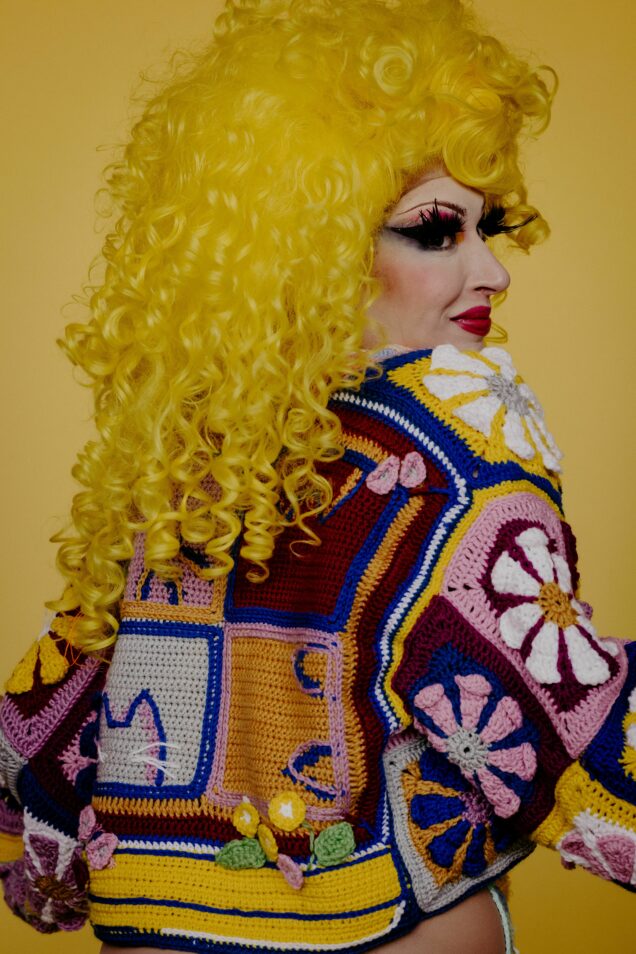
How did your training and experience help you to create and innovate in your artistic practice?
I’m largely self-taught. YouTube is a fantastic source of information. Sometimes in the art world, we put a lot of importance on the elitism of academics, but craft can be learned by anyone that has the desire to learn, just like most art forms. All you need is the drive, and practice. You don’t need an elite diploma to be an artist. You just must make art to be an artist.
I also have the type of brain that (wrongly) assumes I can do anything I try. So, when I want to learn a new skill, like quilting for example, I’ll consume all the knowledge I can, but I am also at the same time just doing it. Trying all sorts of quilting experiments, and learning from the experts, but also learning from my own mistakes.
I have also been doing drag all over the Maritimes for the last six years, and I have learned so much through Barb. I have learned and developed strong public speaking skills, critical problem solving, how to make fun and exciting costumes on an extremely limited budget and so much more. This training by fire, gave me lots of confidence and courage to chase my (scary) dreams. Being a full-time artist, and depending on myself to pay all my bills, and maintain my own health is terrifying but also so exciting and rewarding.
What stimulates you most about your practice?
I have a strong, and often unavoidable, artistic drive. I can’t relax without busy hands. I’m always crocheting or hand sewing. I often hyper fixate when learning a new skill. For example, since November I have been teaching myself how to quilt, and experimenting with what I can quilt that isn’t the traditional quilting cotton. I have been unable to stop quilting since, and have made quilted jackets and a large fun, secret (for now) quilt that I’m finishing up this month.
Also, because of the communities I’m a part of and care deeply about, advocacy is a large part of my artistic practice, particularly those of queer youth. My artistic practice likes to join these important conversations and add power to my community. Additionally, in the last two years, the level of protests and death threats at my drag events, and drag story time have significantly increased, but instead of scaring me, it’s driving me to do more. I have a fun crochet/textile/drag story time project in the works now that I’m very excited to show New Brunswick in the next couple of years.
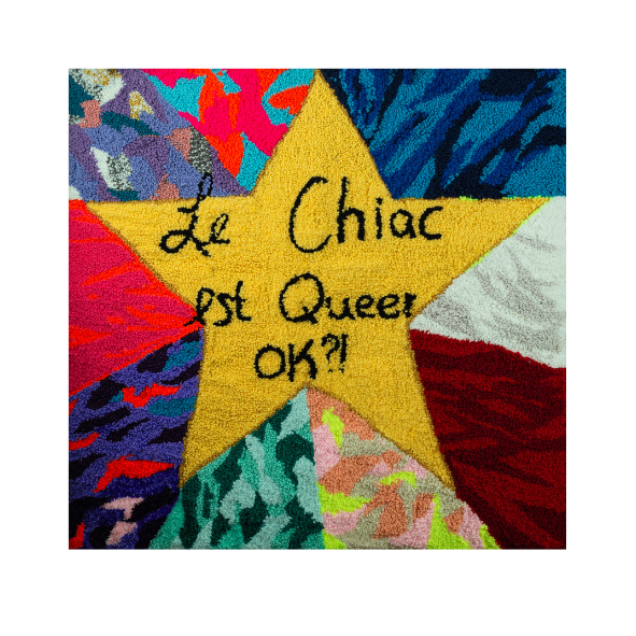
What drew you to textile works?
When my Acadian grandma taught me how to knit as a young child, I don’t think she knew she was sending me down a certain path. At our sleepovers, we would knit and watch movies together. The women in my family, like my aunts, also inspire me. Women, and domestic crafts, have often been underrepresented and not respected like the male-dominated mediums. I want my work to help dismantle this misconception and help showcase that domestic art is not only still cool but something that needs just as much training and education as any other art form.
What motivates your creativity?
I don’t know if I can turn off my creativity. People often ask me how I come up with my ideas, but my brain is just an idea machine—the trick is to jump on the right ideas. I like to picture how my brain works visually. The front of my brain is my main processing of thoughts, ideas and internal monologue, but in the back of my brain, I picture a stove top with a bunch of simmering pots, and in those pots, I put in my ideas that need to simmer. When those ideas are fully cooked, I am usually so eager to jump on the creative aspect because this work has usually been with me for a while before I start working on it.
How does your creative process unfold as you create an artwork?
Trial and error is my main process if I am honest. I find I learn just as much from my mistakes as I do from books or experts. I also hate making mistakes, but I am learning to embrace them because I can usually learn something cool or discover a new technique. I am a hands-on learner, and if I just have to listen, my ADHD brain won’t pay attention. So, I learned how to work with my inattentive brain, and I find the best way for me— and I often will encourage others to do so too—is completely hands on and involves accepting that mistakes are part of the learning process. I’m too impatient to sit down and read all the instructions, so I tend to just go and try until I figure it out.
What is your artistic approach and/or philosophy to creating art?
if it’s not pushing boundaries, it's not worth doing.
Why do you think it's important to make art and pursue an artistic career?

Without sounding dramatic, it’s the only way of life for me and my mental health. When I fight against this drive of mine, my mental health tanks. I don’t think I have much choice in the matter, but I am so happy pursuing my dreams.
What have you learned about yourself and the artistic community through your work?
There is so much help available, you just need to know where to look, and find the courage to ask. Also, grant writing is less scary than you think, and if you struggle with bragging about yourself in writing, pretend you’re writing about a friend you love. It helps push against the imposter syndrome.
What do you think is the impact of artists' work on communities?
Art adds a necessary brightness to our world, but it also serves important advocacy work.
Describe what you are most proud of in your career.
I have my first official art gallery show booked this summer at the Galerie Sans Nom, and I’m really proud of the work I have done for Acadie Rock in the past 3 years. And my part in the documentary “Ya une étoile”.
What advice would you give to young and emerging artists?
It’s scary, it’s really scary, but you deserve to be happy and to chase your dreams.
